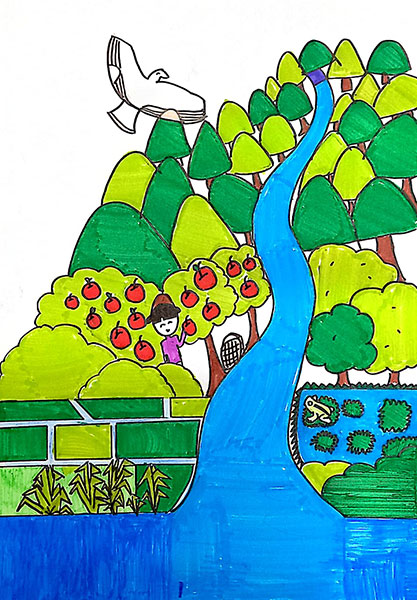Satoyama Initiative
- ◆ An Overview on the Satoyama Initiative
- ◆ International Partnership
- ◆ Satoyama Initiative in Taiwan
Taiwan Ecological Network
Taiwan Ecological Network
◆ Ecological Corridor and Key Areas
Ecological Corridor

the ecological habitat function
and biodiversity.
The Forestry Bureau officially proposed the "National Ecological Conservation Green Network Construction Project" in 2018. The primary objective of the project is to establish and uphold a national ecological conservation green network. The network aims to join green belts and east-west rivers, link mountains to the coast, and interlace the "Forest-River-Land-Sea" corridor to form a national biosafety network. The project's goal is to enhance the ecological habitat function and biodiversity of low-elevation mountains, plains, wetlands, and seashores while preserving social-ecological-productive landscapes and seascapes to create resilient communities. The aim is to foster sustainable development which is emphasized by the United Nations.
However, the land between the central mountain range and the seashore is under severe pressure from land development and utilization, leading to fragmentation of the ecosystem and gradual reduction in biodiversity. Even though the forest ecosystem in Taiwan's central mountain range is adequately protected, promoting a sustainable development model that considers both the economy and the ecological environment in private lands and restoring damaged habitats in low-altitude and shallow mountainous regions, which are the production and living areas of people, is a crucial aspect of habitat conservation.
Key Areas
In Taiwan's ecological network, the island has been divided into seven green network divisions based on county and city boundaries, considering the principle of administrative convenience and following the guidelines of the climate division. In general, mountainous areas tend to be in most counties and cities, whereas low-elevation mountains and plains are often found near major rivers. These ridges and rivers have a significant impact on the local climate and the distribution of terrestrial wildlife. The division of counties and cities largely corresponds to the natural geography of the area.
The North- The climate in the north has high annual precipitation and no obvious precipitation in each season, but the temperature is more apparent, similar to the climate in the northeast. The northern part is divided into two green grid regions. In the north, the Tatun Volcano Group flows northward into the sea, and there are many fan-shaped deltas. This area is home to many deltas, freshwater wetlands, and water terraces, so conservation efforts focus on maintaining habitats and shelters for these environmental organisms.
The Northeastern- The northeastern region is like the northern region in terms of high rainfall. In terms of topography, the northeastern region is dominated by flatlands, paddy fields, and wetlands. The mountain areas along the highways are also essential for the conservation of rare and precious organisms.
The Northwest- In the northwest, the main landscape types are low-elevation mountain forests, farmlands, and ponds inlaid with Satoyama landscapes. There are also coastal reefs and coastal forests along the coast. In the low-elevation mountain ecological system, the focus of conservation efforts is on the establishment of ecological corridors in the forest habitats in low-elevation mountains, and the creation of suitable habitats for wild animals such as Leopard Cats.
The Western- The western boundary is defined by the Daan River, the western ridge of the Snow Mountains, and the northwestern part of the area. To maintain wildlife habitats, friendly agricultural production and community promotion of the ecological environment like the Satoyama landscapes and Satoumi sea areas are combined.
The Southwest- The climate in the southwest is characterized by distinct wet and dry seasons. The annual average temperature in this area is high, and the temperature in each season is not obvious, but the precipitation is seasonal, and the annual precipitation in the mountain area is high. The climate zone is like the southern part and the Hengchun Peninsula. The environmental features include the low-elevation mountain ecosystem and the Satoyama mountain ecosystem, with lagoons, estuaries, fish farms, and abandoned salt flats along the shoreline. The Chianan Plain has ponds and canals.
The Southern- The southern part and the Hengchun Peninsula are mostly grassland, wetlands of ponds and farmland, and the production landscape and forests like Satoyama landscapes, which promote friendly pesticides and reduce the use of pesticides in this region.
The Eastern- The eastern part includes rift valleys like Satoyama landscapes and Satoumi sea areas, and deltas on the east side of the coastal mountain areas. The Hualien River, Beinan River, Zhiben River, and other major rivers in the east form large wetlands at the mouth of the sea. The areas of concern for the outlying islands include Kinmen, Orchid Island, Green Island, Penghu, and Matsu, etc. The types of habitats, species of concern, and issues of concern vary from place to place.
